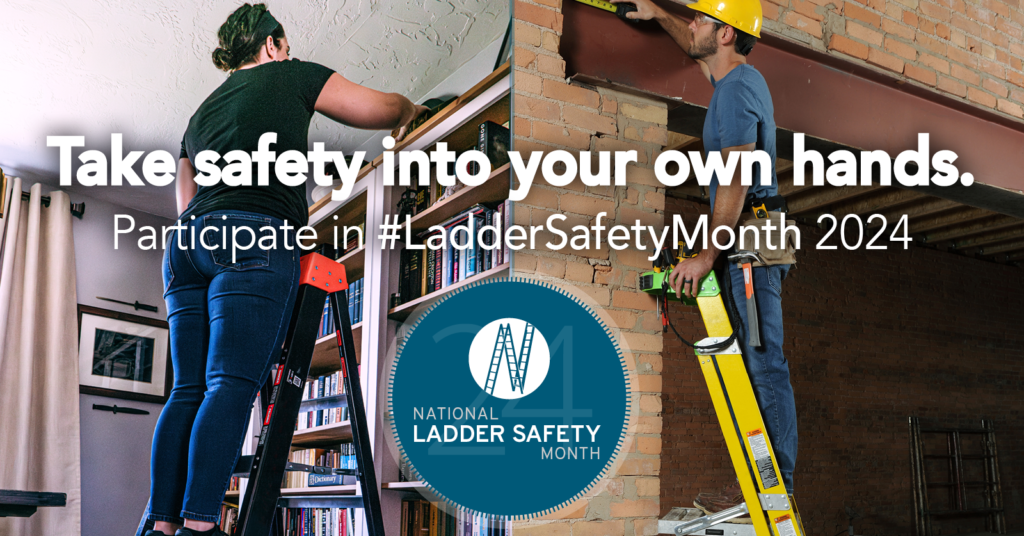
March was National Ladder Safety Month. As we move into April, we wanted to share some ladder best practices and training tips from the National Ladder Safety Month website to keep in mind. Whether using a ladder at home or on a job, remembering safety guidelines and best practices is the best way to avoid potential hazards!
Ladder Training
If a job requires you to use ladders daily, provide proper training to all individuals using ladders. Even if you use a ladder at home, awareness of best practices never hurts.
- Educate users on ladder safety guidelines, best practices, and potential hazards.
- Instruct users to read and follow all the safety information labels on the ladder.
- Promote a culture of safety awareness where workers actively identify and report
ladder safety concerns.
Identify Factors that Can Contribute To Falls
Avoid factors contributing to falls from ladders like – haste or sudden movement, overreaching, lack of attention, improper climbing posture such as standing too high or straddling the ladder, and carrying objects while not maintaining three points of contact.
Best practices are:
- Preplan – Inspect and know the hazards within your work environment.
- Choose the correct ladder for the job – a self-supporting stepladder or a non-self-supporting leaning, single, or extension ladder.
Setting Up a Ladder
Ensure proper ladder setup with placement on a firm level surface, and use
accessories (levelers, stabilizers, V-rung, etc.) to accommodate any irregular
setup conditions.
Some tips to follow are:
- Secure your ladder where possible by tying off, blocking, bracing, or having an
assistant holds the ladder. - Never attempt to move or reposition any ladder while it is occupied.
Setting up a Stepladders:
- Fully open and lock spreaders.
- Support ALL FOUR feet – no elevated feet.
Setting up Leanable Ladders:
- Support at all four corners – both feet and both top rails on firm surfaces.
- Do not rest the ladder against the top rung.
- Position at a 75° angle to avoid sliding out:
- Place your toes against the bottom of the ladder side rails and stand erect.
- Adjust the ladder angle to grasp lower section rails at shoulder level with arms straight.
- Only move or reposition a self-supporting extension ladder after retraction and from the ground.
- Never adjust the ladder position or extended length from above.
Climbing a Ladder
Climb slowly and deliberately.
- Follow the three points of contact rule – face the ladder and use both hands while
climbing up and down. - Keep both hands free for climbing. Use a towline, tool belt, or an assistant to lift tools
and equipment up to the work area.
Maintaining Balance While Working
Maintain your balance while working and avoid sudden movements.
- Lean into or hold onto the ladder to maintain three points of contact.
- Keep the center of your stomach between the ladder side rails – do not overreach or
lean so you do not fall off the ladder. - Wear clean, slip-resistant work shoes.
Best practices for Stepladder:
- Do not stand on the top step, top cap or straddle the top.
- Do not access another surface unless it has been secured from side movement.
Best practices for Leaning/ Extension ladders:
- Do not stand on the top three rungs.
Transport and Storage:
Properly secure your ladder during transport to avoid excessive wear and
Loading at the vehicle support points. Store ladders where they are protected from unsafe materials, impact, or corrosion damage.
Check out https://www.laddersafetymonth.com/safety-resources/articles/ for more resources on Ladder Safety.
And remember to be safe while climbing!